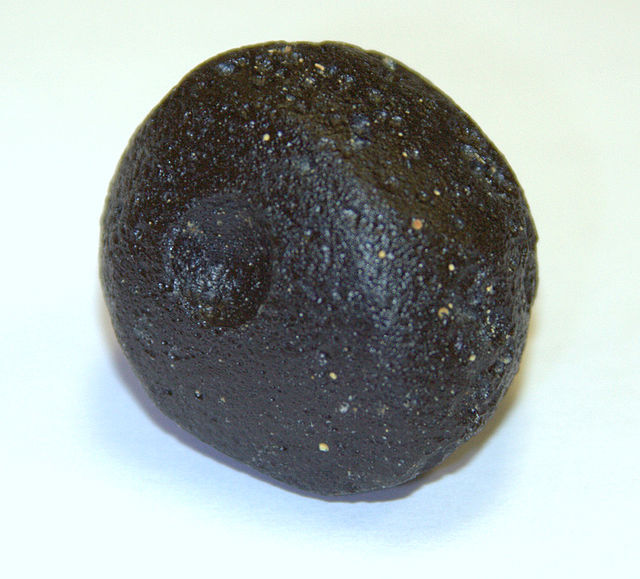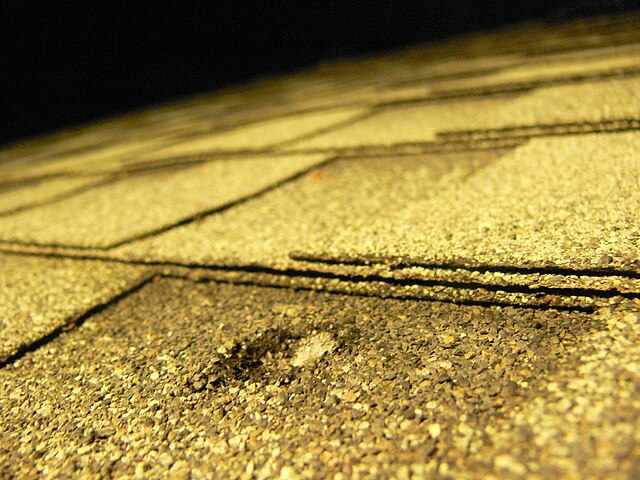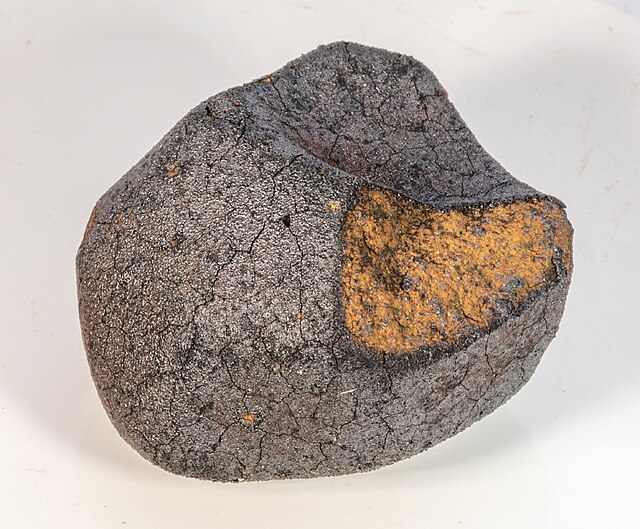Tektites are gravel-sized bodies composed of black, green, brown or grey natural glass formed from terrestrial debris ejected during meteorite impacts. The term was coined by Austrian geologist Franz Eduard Suess (1867–1941), son of Eduard Suess. They generally range in size from millimetres to centimetres. Millimetre-scale tektites are known as microtektites.
Two splash-form tektites, molten terrestrial ejecta from a meteorite impact
Muong Nong Indochinite with layered structure and inclusions.
A very rare aerodynamically shaped Australite – Shallow Bowl
A simple, spherical splash-form Indochinite tektite
A meteorite is a rock that originated in outer space and has fallen to the surface of a planet or moon. When the original object enters the atmosphere, various factors such as friction, pressure, and chemical interactions with the atmospheric gases cause it to heat up and radiate energy. It then becomes a meteor and forms a fireball, also known as a shooting star; astronomers call the brightest examples "bolides". Once it settles on the larger body's surface, the meteor becomes a meteorite. Meteorites vary greatly in size. For geologists, a bolide is a meteorite large enough to create an impact crater.
The 60-tonne, 2.7 m-long (8.9 ft) Hoba meteorite in Namibia is the largest known intact meteorite.
NWA 859 iron meteorite showing effects of atmospheric ablation
The impact pit made by a 61.9-gram Novato meteorite when it hit the roof of a house on 17 October 2012.
Meteorite fallen near Flensburg in 2019.








